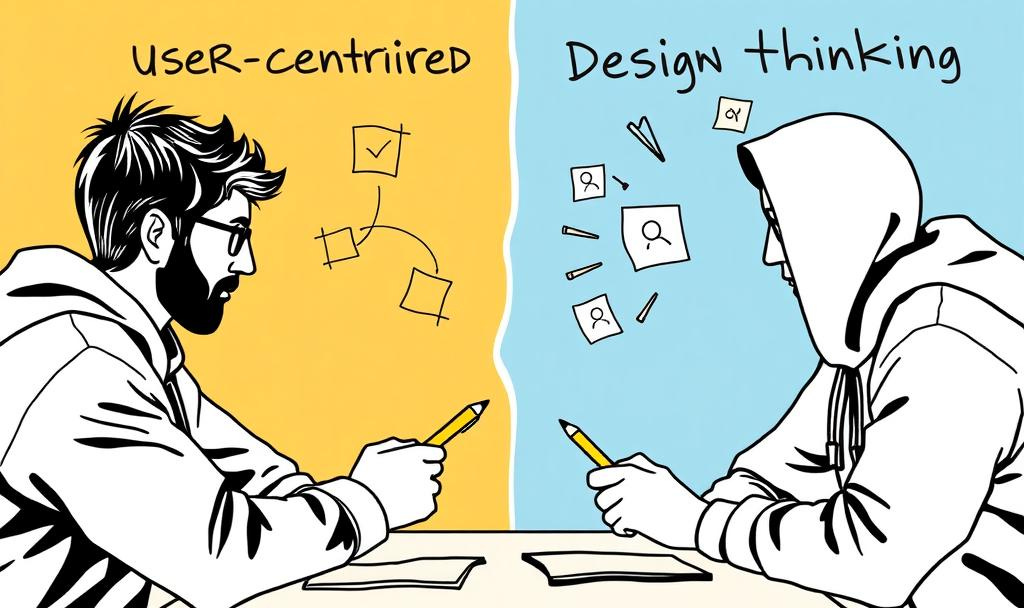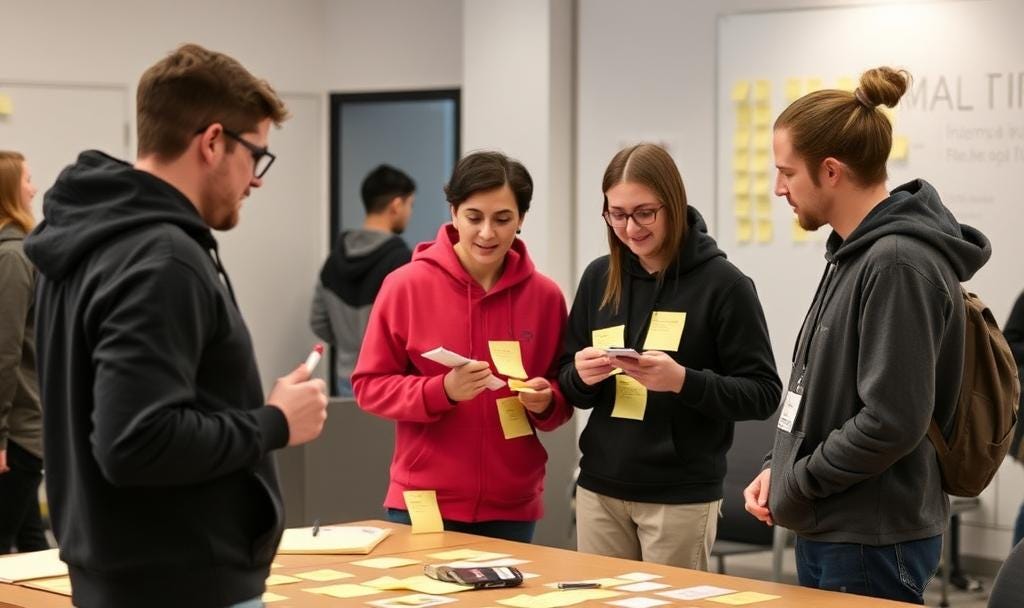What's the difference between User-Centred Design and Design Thinking?
Because they're not the same, as it turns out
They say the best way to learn something thoroughly is to teach it. That’s what I do quite a lot; teach designers and researchers.
Because of this I’m constantly having to check my definition and categorisation of things all the time. Ontological gymnastics, if you will, to keep me on my toes.
Therefore, today it’s time for a reflection on user-centred design.
I’ve always wrapped up all sorts of design methods that are focused on user needs into the category of “user-centred design” but I had to challenge myself on that this week because, yes as you’ve rightly guessed..
It Depends…
Aren’t all UX Designers user-centred?
Well, yes when they let us.
All of our work is or at least should be about designing for end users. And our brains are centred on the user, therefore we are user-centred.
And Design Thinking is a method centred on the user, so it’s user-centred.
And Design Sprints are user-centred
And workshops can be user-centred (though sometimes are not)
And design systems should be user-centred.
And user research has to be user-centred.
However. Just because Design Thinking is user-centred in its nature, doesn’t mean it’s the same thing as User-Centred Design.. the methodology.
Wait. Wut?
The difference between Design Thinking and User-Centred Design .. methodologies
So yes, the two methods share certain principles. They are:
Focused on users’ needs and intending to solve user problems
Iterative and rely on testing and feedback cycles
Collaborative and encourage cross-functional ways-of-working
However, they have a different scope, approach and are used for different things.
Ready for a geek-out?
Let’s go.
User-Centred Design
UCD is often applied in Product Design and UX Design where usability and direct, specific and evidence-based user feedback is critical to a successful outcome.
It is used for designing experiences, products and services that specifically meet the needs, goals (and abilities) of users.
Design Thinking
Design Thinking has a wider scope. It can be applied to a wide variety of problems not just digital products and interfaces. Therefore it is often used in Service Design, Organisational Design or Innovation style projects.
It is used as a problem-solving framework that emphasises creativity and collaboration.
Users are still central, but there’s a wider exploration of systemic issues and/or business needs.
Breaking it down further
UCD - Improve the usability or effectiveness of a tool within the workflow for users.
Design Thinking - redesign the entire workflow for users+stakeholders+everyone
Yeah, I don’t get it either
Why they teach Design Thinking over UCD in UX and Product Design bootcamps I will never understand - the UCD methods I grew up with are far more efficient at solving specific Product Design challenges.. imho.
Controversial thought - not everything needs ideation. Just saying.
How the methods differ in execution
Both methodologies are iterative, but their processes are structured differently.
UCD Process
Understand - Conduct research into users via primary research.
Define - Document personas or user insight, scenarios, task analysis, frame the design problem
Design - Wireframes, prototypes, interaction design (based on user research)
Test - Usability testing with users
Iterate - Refine designs based on user feedback
Note: Yes there’s more to it than this. The understand/define phase can and often does involve stakeholder interviews, requirements, information architecture and content design, and more. This is an example. Let’s suspend disbelief for the sake of understanding.
The process is highly user-focused at every step and revolves around solving specific user problems.
Design Thinking process
Empathise (1) - Understanding the people you’re designing for (users or stakeholders or whoever)
Define - Reframe the problem into something you can solve
Ideate - Brainstorm and generate solutions. Get creative. Often workshops.
Prototype - Build some kind of representation of the solution or idea
Test - Validate (2) with users and iterate
There’s a reason IDEO pushed the heck out of this method and built their business on it. It’s a classic agency-style method for inventing new shinies, it allows you to turn up, charge money for workshops and invent fabulous-sounding things that can’t ever be built.
However, it’s also very good for in-house teams who want to solve service-level problems working with large groups of stakeholders. I.e. Service Designers.
How the methods work with users
You’d think it’s the same, right? Actually no.
UCD and users
As the name suggests this is all about the users, and involving them throughout the design process. Co-Design, Usability Testing, these are methods used to design with users not just for them.
Design Thinking and users
Move fast and break things. Design Thinking is about empathy which (see footnotes) can be a euphemism for having a bit of a guess working at a more assumptive level. This could be using JTBD or high level personas.
By high level, I mean put together based on a bit of desk research (Googling), rather primary research with real humans, as is usually the case in UCD.
The risk here of course is that as both methods include user testing, you might get a bit of a surprise later on when you find out that the thing goes down well with users, but is not exactly what they need.
How the methods use designers’ creativity
Keep reading with a 7-day free trial
Subscribe to It Depends... to keep reading this post and get 7 days of free access to the full post archives.





